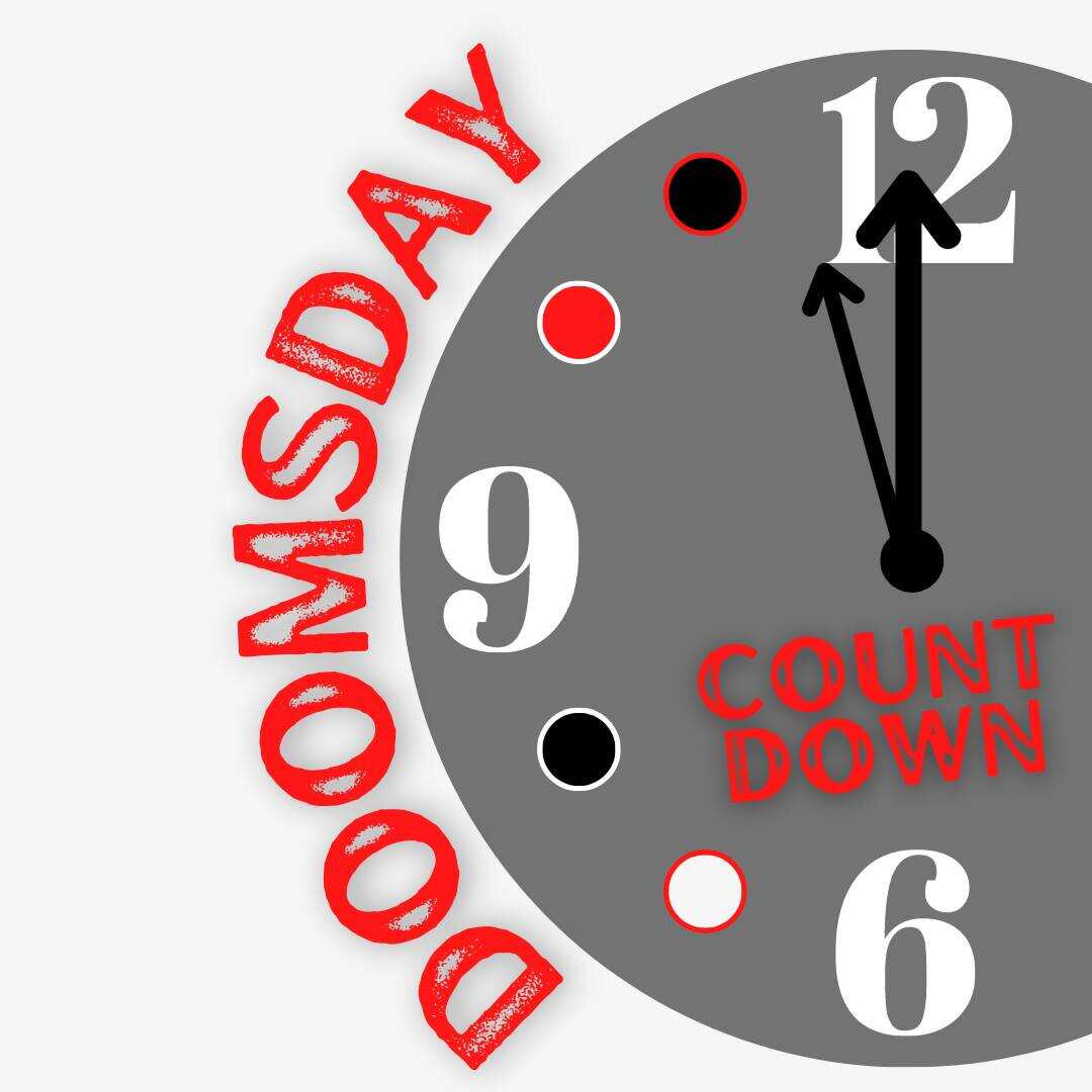With the war in Ukraine entering its second year, climate change disasters happening around the world and the ever-present danger of COVID-19, the Science and Security Board of the Bulletin of the Atomic Scientists set the Doomsday Clock to “90 seconds to midnight” Jan 24, 2023.
Harry Atkins of HistoryHit wrote the Doomsday Clock was originally designed to focus on the threat of nuclear war and what it would bring.
Atkins stated, “[T]he clock was devised in 1947 — with an initial time of 23:53 — in an effort to convey the urgency of the issue in an instantly familiar format and ‘frighten men into rationality.’”
Throughout its life, the influences on the clock have changed, but its purpose and what it stands for have not.
While much of that same urgency still exists, not everyone believes in the symbolism of the clock. Forensic chemistry senior Jaina Bemis said while steps toward the end of the world have been made, it's not too late to turn it around.
Bemis said while the world is headed down the path to ruin, the possibility of turning it around exists. She said one way to do so is by paying attention to climate change and the climate crisis and making every effort to face it head-on.
Other students had different ideas of what influenced the current countdown. Criminal justice sophomore Chris Addison said the war in Ukraine is one possibility for the current time of the Doomsday Clock.
“If we’re basing it off the war, we could be seconds from a nuclear war. Most of the countries now have the capability of a nuclear war, and to start, I think it's pretty accurate if you’re looking at Ukraine and Russia,” Addison said.
The potential for nuclear nations to resort to hitting the button and end the world could also influence the doomsday countdown, Addison said.
Not all students see the end of the world from a scientific standpoint, but rather from a perspective of faith. Cybersecurity graduate student and president of the Muslim Student Association Mohammed Junead Sheriff Zahid said for those of the Muslim faith, they believe there will be signs that will precede the end of the world.
“[We believe] the tribe of Gog and Magog will come, and they will start wiping out all the resources of the world, and when they are destroyed, there’ll be three landslides, one in the West, one in the East and one in the Arabian Peninsula,” Zahid said.
Zahid said these major signs would mean the end was here, but that time is not now. He said rather than focusing on the end, it is better to focus on what can be done today.
“If you are a good person, good to the people, good to the environment, good to the God himself, then I think you don’t have to be, you know, worrisome. But yes, if you are a bad person, then definitely, there is something to worry about,” Zahid said.
Professor of environmental science John Kraemer said although the threat of nuclear weapons and the destruction of the environment contribute to the breakdown of the world, avoiding this scenario is possible.
“The worst thing we can do is we keep on the track we are going. We don't change the way we’re thinking and making alternative choices. Once resources are gone or systems disappear, it's not like we can go back and hit the reset button and try again,” Kraemer said.
The path to this may be in finding alternatives to the way global resources are consumed, Kraemer said. Becoming conscious of how resources are used can be a good step.
“So, we think about how we use resources better, right? Maybe we can find renewable energy sources and be better at using them worldwide. We have to think more about waste, about how we’re changing the environment where we live and how that is changing the environment for generations to come,” Kraemer said.
Change is the first step, and while change can be hard, it is a necessary difficulty that must be achieved, Kraemer said.





